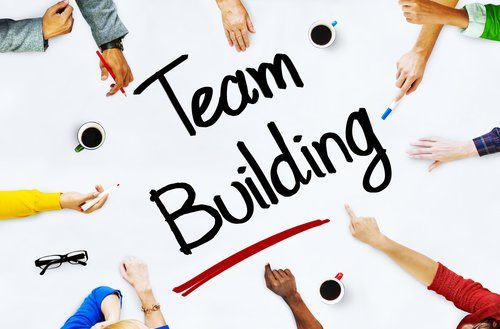
Effective communication is the cornerstone of successful team building. In today’s fast-paced work environments, where teams are often distributed across different locations and time zones, the ability to communicate clearly, openly 團隊建設, and effectively is more important than ever. In this article, we’ll explore the critical role of communication in team building and provide insights into how leaders can foster a culture of effective communication within their teams.
- The Importance of Effective Communication: Effective communication is essential for building trust, fostering collaboration, and achieving common goals within a team. Here’s why communication is key to successful team building:a. Builds Trust and Rapport: Transparent and open communication fosters trust among team members. When individuals feel heard, respected, and valued, they are more likely to trust their colleagues and work together towards shared objectives.b. Enhances Collaboration: Clear communication enables team members to share ideas, exchange information, and coordinate efforts effectively. By promoting collaboration and knowledge sharing, communication facilitates problem-solving and innovation within the team.c. Promotes Alignment: Effective communication ensures that everyone is on the same page regarding goals, expectations, and priorities. When team members understand their roles and responsibilities clearly, they can align their efforts towards achieving common objectives.d. Resolves Conflicts: Communication serves as a mechanism for addressing conflicts and resolving issues within the team. By encouraging open dialogue and constructive feedback, leaders can prevent misunderstandings from escalating and find mutually acceptable solutions.
- Strategies for Fostering Effective Communication: Creating a culture of effective communication requires deliberate effort and intentionality from leaders. Here are some strategies to foster communication within your team:a. Set Clear Expectations: Clearly communicate expectations regarding communication norms, channels, and frequency within the team. Establish guidelines for how and when team members should communicate, whether it’s through email, instant messaging, video conferencing, or face-to-face meetings.b. Encourage Active Listening: Actively listen to your team members’ perspectives, concerns, and feedback. Encourage others to do the same by modeling attentive listening behaviors, such as maintaining eye contact, asking clarifying questions, and summarizing key points.c. Foster Open Dialogue: Create a safe and supportive environment where team members feel comfortable expressing their ideas, opinions, and concerns. Encourage open dialogue by welcoming diverse viewpoints, soliciting input from all team members, and refraining from judgment or criticism.d. Use Multiple Communication Channels: Utilize a variety of communication channels to accommodate different preferences and communication styles. Whether it’s face-to-face meetings, email, instant messaging platforms, or collaborative tools, choose the appropriate channel based on the nature and urgency of the communication.e. Provide Regular Updates: Keep team members informed about project progress, milestones, and developments through regular updates and status reports. Transparency and timely communication help build trust and ensure that everyone is aware of the team’s progress towards goals.f. Offer Constructive Feedback: Provide constructive feedback to team members on their performance, contributions, and areas for improvement. Focus on specific behaviors or actions, and offer suggestions for growth and development. Encourage a culture of continuous learning and improvement within the team.
- Leveraging Technology for Communication: In today’s digital age, technology plays a vital role in facilitating communication and collaboration within teams. Here are some ways technology can enhance communication:a. Collaboration Tools: Utilize collaboration platforms such as Slack, Microsoft Teams, or Google Workspace to facilitate real-time communication, file sharing, and project collaboration among team members.b. Video Conferencing: Conduct virtual meetings and brainstorming sessions using video conferencing tools like Zoom or Microsoft Teams. Video conferencing allows for face-to-face communication, even when team members are geographically dispersed.c. Project Management Software: Use project management tools such as Asana, Trello, or Jira to track project progress, assign tasks, and communicate project updates with team members. These tools help streamline communication and keep everyone aligned and organized.d. Feedback and Recognition Platforms: Implement feedback and recognition platforms like 15Five or Kazoo to facilitate ongoing feedback, peer recognition, and performance management within the team. These platforms provide a structured framework for giving and receiving feedback, fostering a culture of continuous improvement.
Conclusion: Effective communication is the foundation of successful team building. By fostering open dialogue, active listening, and transparent communication within their teams, leaders can cultivate a culture of collaboration, trust, and mutual respect. Leveraging a combination of communication strategies and technology tools, leaders can empower their teams to communicate effectively, collaborate efficiently, and achieve collective success. As the saying goes, “Communication is key” – and when it comes to team building, truer words were never spoken.